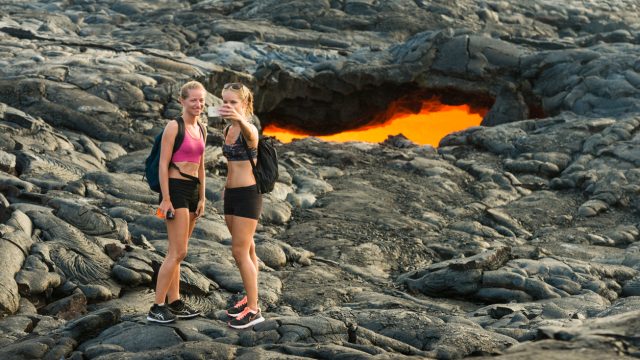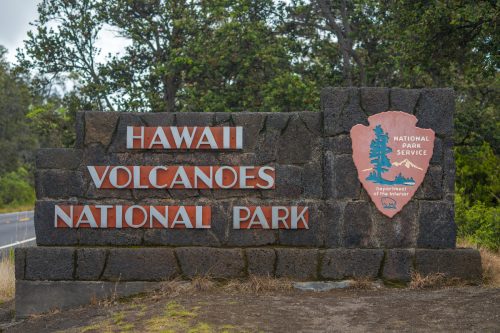Erupting Mount Kilauea Volcano Has Tourists Rushing to Hawaii

On June 7, Hawaii’s second-largest volcano, Mount Kilauea, started erupting. The volcano has erupted intermittently from September 2021 through March 2022, with the most recent activity spanning 61 days from Jan. 5, 2023, according to CBS News, and travelers are already changing their vacation plans in an attempt to see the action for themselves.
Tourist Shadra Lash told the Hawaii Tribune Herald that she changed her trip from Oahu to the Big Island based on the eruption news. Her family visited the area in March and just missed the last eruption, so this new activity was a sign to try their luck again.
“When I heard the eruption stopped [in March], I was so disappointed,” she added. “I have been praying and manifesting that the eruption would come back. The day we got here was the day the lava began bubbling again, and I am just so excited.”
The Hawaiian islands are home to 129 volcanoes, and volcano tourism is one of the biggest reasons many people travel to the Big Island of Hawaii specifically. In 2018, a devastating eruption destroyed more than 700 homes from rushing lava, closing the park for months of reconstruction. It cost the park nearly $166 million in tourist revenue, according to Reuters.
READ THIS NEXT: U.S. National Parks Are Getting Rid of This for Visitors, Starting Now.
Ross Birch, executive director of the Island of Hawaii Visitors Bureau, spoke to USA Today shortly after the 2018 eruption. He felt the financial loss was significant because while homes were destroyed, most residents had been safely evacuated, and that living in the area was a known risk in terms of potential eruptions.
“The effect of possible cancellations or lack of tourism is quite honestly a greater impact on our island economically than our lava flow,” he explained.
COVID-19 also impacted the park’s numbers, but the industry has since bounced back. In 2022, 1.5 million people visited Hawai’i Volcanoes National Park, according to official park data, and additional data indicates that park visits rose significantly during the 2021-2022 eruption period as well, with at least 143,141 visitors in December 2021 alone.
Based on historic numbers correlating with previous eruptions, the Hawai’i Volcanoes National Parks Service (HVNPS) is swiftly preparing for the new influx of tourists.

Those hoping to snap a lava selfie should heed safe viewing tips from the HVNPS. “Stay on marked trails and overlooks,” their updated website advises. “Do not enter closed areas. Avoid cliff edges and earth cracks.”
“Expect long waits for parking spaces at popular vantage points like Kīlauea Overlook and Devastation parking lot,” the site HVNPS adds, suggesting visitors enter the park “after 9 p.m. and before 5 a.m.” to avoid crowds (the park is open 24 hours every day).
So far, the eruption seems relatively stable, and visitors adhering to safety measures can watch activity without issue. The United States Geological Survey (USGS) website issues safety alerts, according to the Hawaii Emergency Management Agency, and currently states that “Eruptive activity is currently confined to Halemaʻumaʻu crater within Kīlauea’s summit caldera. No unusual activity has been noted.”
RELATED: For more up-to-date information, sign up for our daily newsletter.
Since the start of the eruption, safety warnings have evolved and volcanic activity seems to remain stable as “lava flow rates have slowed and no critical infrastructure is threatened,” the agency tweeted earlier this week. However, visitors planning to see an active volcano should stay up-to-date on safety announcements.